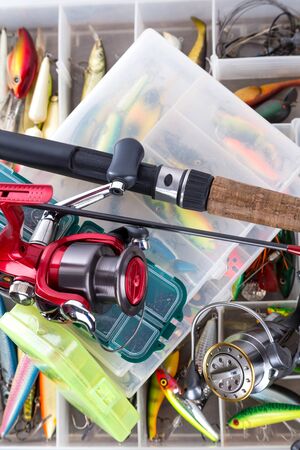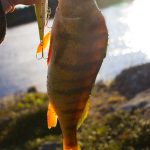1. The Threat of Lead in Fishing Tackle
Understanding the Prevalence of Lead in American Sport Fishing
Across the United States, millions of anglers take to lakes, rivers, and coastal waters each year, enjoying the thrill of sport fishing. Most people use traditional tackle, which often includes lead-based sinkers, jigs, and lures. Lead has been a popular material for decades because it’s inexpensive, easy to mold, and sinks quickly. However, while these qualities make lead appealing for fishing gear, they also come with serious environmental risks.
How Wildlife Gets Exposed to Lead Tackle
When fishing tackle is lost in the water—a common occurrence—lead pieces settle on the bottom or get swept away by currents. Waterfowl like loons, swans, ducks, and other native birds can accidentally swallow small lead sinkers or jigs while searching for food or grit at the bottom of a lake or river. Even fish and other aquatic life can be exposed to dangerous amounts of lead when these items break down over time.
Common Types of Lead-Based Fishing Tackle
| Type | Description | Main Risk to Wildlife |
|---|---|---|
| Sinker | Small weights attached to fishing lines to help bait sink | Easily ingested by birds searching for grit |
| Jig Head | Weighted hook used with soft plastic baits | Can be swallowed by fish or waterfowl |
| Lure | Artificial bait, often with internal lead weights | Breaks apart and exposes lead to animals |
The Impact on Native Wildlife and Waterfowl
Even a tiny piece of lead can be deadly. Birds that swallow lead tackle often suffer from lead poisoning—a slow and painful process that affects their nervous system, causes muscle weakness, and can eventually lead to death. In some areas of the country, lead poisoning from fishing tackle is one of the leading causes of death for certain bird species.
Wildlife at Greatest Risk from Lead Tackle Exposure
- Loons (especially in northern states like Minnesota and Wisconsin)
- Trumpeter Swans and Tundra Swans
- Ducks and Geese in wetlands across America
- Bald Eagles and Ospreys that eat contaminated prey
The Big Picture: Why It Matters
The widespread use of traditional lead-based fishing tackle poses an ongoing threat to America’s treasured wildlife. By understanding how common these products are—and how easily they cause harm—we can begin exploring safer alternatives that protect both our fishing traditions and our natural heritage.
Wildlife at Risk: Impact on Birds and Aquatic Life
Lead-based fishing tackle might seem harmless, but when it’s lost in lakes and rivers, it poses a serious threat to American wildlife. Many birds and aquatic animals accidentally swallow small lead sinkers or jigs when they’re searching for food or grit. Once ingested, even a tiny piece of lead can cause lead poisoning, which is often fatal.
How Lead Tackle Harms Wildlife
Let’s look at how some well-loved American species are affected:
| Species | How They Ingest Lead Tackle | Effects of Lead Poisoning |
|---|---|---|
| Loons | Pick up lost sinkers while searching for small stones to help digest food | Paralysis, loss of balance, inability to fly, often leads to death within weeks |
| Bald Eagles | Eat fish or waterfowl that have swallowed lead tackle | Nervous system damage, muscle weakness, seizures, usually fatal if untreated |
| Ducks & Swans | Scoop up bottom gravel for digestion and accidentally ingest lead pieces | Lethargy, organ failure, decreased survival rates in flocks |
The Bigger Picture: Freshwater Ecosystems
The problem goes beyond just individual animals. When top predators like eagles or loons die off due to lead poisoning, it disrupts the balance of entire freshwater ecosystems. Fewer predators mean populations of smaller fish and aquatic creatures can grow unchecked. Plus, lead doesn’t go away; it builds up in the environment and can be passed along the food chain.
Key Points About Ecosystem Impact
- Biodiversity Loss: Declining bird populations reduce ecosystem diversity and resilience.
- Toxic Build-Up: Lead accumulates in sediments, affecting insects and small fish that are food for larger species.
- Public Health: Contaminated fish can pose risks to anglers who eat their catch.
Why Switch to Lead-Free Tackle?
Choosing lead-free fishing gear isn’t just about following the rules—it’s about protecting our lakes, rivers, and the wildlife that make American outdoors so special. By making the switch, anglers help ensure that future generations can enjoy the same rich wildlife and clean waters we have today.
![]()
3. The Science Behind Lead-Free Alternatives
When it comes to fishing tackle, American anglers are increasingly turning to lead-free options—not just for the health of our lakes and wildlife, but also for better performance on the water. Modern materials like tungsten, tin, and bismuth offer some impressive benefits that go beyond just being safe for the environment.
Why Switch from Lead?
Traditional lead sinkers and lures can break down in the water, poisoning birds, fish, and other wildlife. But todays alternatives do more than just remove this risk—they actually give anglers new advantages.
Lead-Free Materials at a Glance
| Material | Main Benefits | Common Uses | Popularity Among Anglers |
|---|---|---|---|
| Tungsten | Heavier than lead (smaller size for same weight), sensitive, durable | Weights, jigs, drop shot sinkers | Very popular; favored in bass tournaments and ice fishing |
| Tin | Affordable, lightweight, non-toxic | Shoot weights, split shot sinkers, small lures | Common in youth & beginner kits; easy to find in stores |
| Bismuth | Non-toxic, similar density to lead, good casting ability | Lure bodies, spinnerbaits, jig heads | Gaining popularity; used by eco-conscious anglers |
Tungsten: The Heavy Hitter
Tungsten is heavier than lead, which means you can use smaller-sized tackle without losing weight. This makes your presentation more natural and helps you feel every bump on the bottom—something serious anglers love. Tungsten’s durability also means it lasts longer trip after trip.
Tin: Lightweight and Budget-Friendly
Tin is a great choice for those looking for something affordable and safe. While its lighter than both lead and tungsten, its perfect for smaller waters or finesse presentations. Many starter kits now come with tin weights because theyre easy to use and pose zero risk to wildlife.
Bismuth: The Balanced Performer
Bismuth sits right between tin and tungsten when it comes to density and cost. Its almost as dense as lead but totally non-toxic. Bismuth tackle casts well and sinks at a familiar rate for anyone used to traditional gear.
The Growing Trend Among American Anglers
Around the U.S., more fishermen are making the switch to lead-free tackle each season. Tournaments are starting to require it, sporting goods stores stock more options than ever, and conservation groups are spreading awareness about its benefits. Whether you fish for fun or competition, going lead-free gives you better gear—and peace of mind knowing youre protecting America’s great outdoors.
4. Grassroots Advocacy and Statewide Regulations
Across the United States, both grassroots efforts and state-level regulations are making a real difference in reducing the use of lead fishing tackle. Local anglers, conservationists, and wildlife enthusiasts are coming together to raise awareness about the dangers of lead contamination in our lakes, rivers, and streams. These community-driven movements have pushed lawmakers to take action, leading to various bans and restrictions on lead tackle in several states.
The Power of Community Action
Grassroots advocacy plays a huge role in driving change. Local fishing clubs, environmental groups, and passionate individuals organize educational events, tackle exchanges, and cleanup projects. They work directly with fellow anglers to promote safer, lead-free alternatives and share firsthand stories about how lead poisoning impacts birds like loons, swans, and eagles.
Examples of Grassroots Initiatives:
| Group/Initiative | State | Main Activities |
|---|---|---|
| Minnesota Pollution Control Agency’s “Get the Lead Out!” | Minnesota | Tackle exchanges, school programs, lake cleanups |
| North American Loon Fund | Northeast US | Awareness campaigns, research funding |
| Wildlife Center of Virginia’s Lead Outreach | Virginia | Community talks, partnerships with fishing stores |
Statewide Bans and Restrictions on Lead Tackle
Thanks to these grassroots efforts and growing scientific evidence, some states have enacted laws that ban or limit the sale and use of certain types of lead fishing gear—especially sinkers and jigs under a specific weight. These rules aim to protect vulnerable wildlife from accidental lead poisoning while encouraging anglers to switch to safer materials like steel, tungsten, bismuth, or tin.
Overview of State Lead Tackle Regulations:
| State | Lead Tackle Regulation Type | Description/Enforcement Year |
|---|---|---|
| New York | Partial Ban | Bans sale/use of lead sinkers <1 oz (since 2004) |
| Maine | Total Ban (small sizes) | No sale/use of lead sinkers/jigs <2.5g (since 2017) |
| New Hampshire | Total Ban (small sizes) | No sale/use of lead sinkers/jigs <1 oz (since 2006) |
| Vermont | Total Ban (small sizes) | No sale/use of lead sinkers <0.5 oz (since 2007) |
| Massachusetts | Total Ban (wildlife areas) | No use in Quabbin/Wachusett Reservoirs (since 2012) |
| California/Minnesota/Oregon/Others | Education/Voluntary Programs* | Tackle buy-back events & outreach; no formal ban yet |
*Many states without formal bans still encourage voluntary use of non-lead tackle through education programs supported by grassroots advocates.
The combined force of state regulations and local community activism is helping protect America’s wildlife for future generations—and creating a culture where responsible angling means going lead-free.
5. Making the Switch: Tips for American Anglers
Switching to lead-free fishing tackle is easier than you might think, and it’s a great way to help protect America’s lakes, rivers, and wildlife. Whether you’re a weekend hobbyist or a seasoned pro, using non-toxic alternatives can keep your favorite fishing spots healthy for generations. Here’s how you can make the switch without missing a beat.
Where to Buy Lead-Free Tackle
Lead-free tackle is becoming more available across the U.S., both in local bait shops and online. Here are some popular sources:
| Store/Website | What They Offer | Location/Shipping |
|---|---|---|
| Bass Pro Shops | Wide range of tungsten, tin, and steel sinkers and jigs | Nationwide/Online shipping |
| Cabelas | Eco-friendly weights, split shot, and lures | Nationwide/Online shipping |
| Tackle Warehouse | Tungsten weights, bismuth jigs, lead-free spinners | Online shipping across the US |
| Your Local Bait Shop | Regional brands and handmade alternatives | Check for local support & guidance |
| Etsy & eBay Sellers | Custom hand-poured lead-free gear from small businesses | Varies by seller—support American makers! |
Adapting to New Gear: What to Expect
Lead-free tackle may feel different at first. Tungsten is denser than lead, so your weights might be smaller but just as heavy. Tin and bismuth are slightly lighter, so you may need to use a larger size for the same effect. Here’s a quick guide:
| Material | Main Benefits | Notes for Anglers |
|---|---|---|
| Tungsten | Very dense; sensitive feel; smaller profile; no toxicity issues | Might cost more up front but lasts longer; excellent for bass fishing and finesse techniques. |
| Tin/Bismuth/Steel/Brass Alloys | No toxic residue; affordable; easy to find in stores | Slightly larger for same weight as lead; good for general freshwater fishing. |
| Ceramic/Glass Weights (Specialty) | No metal at all; unique sound attraction underwater | Best for specific rigs or when targeting curious species. |
Quick Tips for a Smooth Transition:
- Start Small: Replace your most-used sinkers and jigs first. Test them on your regular fishing trips before switching your whole box.
- Talk to Local Experts: Ask staff at your favorite shop about what works well in your area—they’ll know which non-lead options catch local fish.
- Read Labels: Look for packaging that clearly says “lead-free,” “non-toxic,” or lists materials like tungsten or tin.
- Share Knowledge: If you find a great new product, let your buddies know. The more anglers make the switch, the healthier our waters will be!
- Proudly Go Green: Using non-lead gear is something to brag about—show it off on social media with #LeadFreeFishing!
Your Impact Matters!
No matter where you fish—from the Great Lakes to the Florida Keys—choosing lead-free tackle helps protect bald eagles, loons, otters, and other wildlife from accidental poisoning. Every angler making this switch is part of the solution. Let’s keep America’s outdoors wild, beautiful, and safe for everyone.


